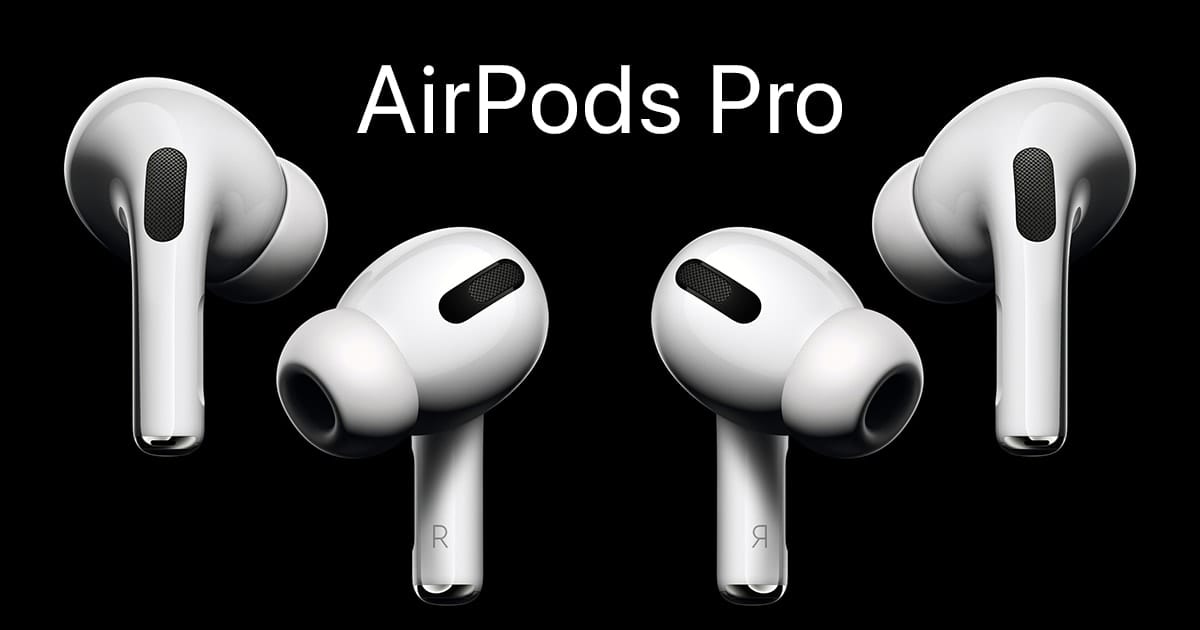
It was bound to happen. With Apple on an accelerated “Pro” kick in recent years, AirPods Pro is the latest product line to earn the moniker. It joins the ranks of iMac Pro (2017), iPad Pro (2018), iPhone 11 Pro (2019), and the completely re-tooled Mac Pro (2019). The “Pro” name itself isn’t new – the MacBook Pro and the original Mac Pro were both born in 2006. But will the new AirPods earn the right to be called Pro? Let’s evaluate.
New Design
Apple has finally ditched the “hanging-on-for-dear-life-so-please-don’t-move-your-head-too-quickly” design that has changed little since the introduction of the wired EarPods in 2012 and the updated EarPods with Lightning Connector in 2016. They are opting to return to an in-ear design for AirPods Pro – something they haven’t dabbled with in quite some time.
Flexible silicone tips help Airpods Pro adjust to the shape of the ear, making them more comfortable and providing a better seal for better sound. A unique venting system also aides the effort by allowing air pressure to equalize, a common problem when something is essentially vacuum-sealed inside your ear canal.
AirPods Pro come with three different sizes of tips and can actually help you decide which are right for you, or if they are seated correctly in your ear. This is done by analyzing what you are listening to, detecting the amount of air pressure, and comparing it to the audio level.
These are definitely Pro moves.
Active Noise Cancellation
With two microphones and software that monitors sound signals 200 times per second, AirPods Pro instantly create anti-noise frequencies to cancel out any unwanted background noise. This allows the user to be free from external distractions, especially in louder environments. Of course, this can be an issue if you need to be aware of sounds around you – e.g., while jogging in traffic, when someone is speaking to you, or the ever-loved inadvertently shouting at someone because you can’t hear yourself talk. AirPods Pro have a solution for that – switching from Active Noise Cancellation mode to Transparency Mode.
Transparency Mode uses the integrated air-venting system and noise-canceling features to balance outside sound with the audio you are listening to. Apple states that this is primarily done by decreasing the amount of noise reduction, but it does not mention if it also uses the internal microphones to amplify external signals like some high-end professional in-ear monitoring systems do. They also haven’t said whether or not Active Noise Cancellation can be used on its own without audio playing, so it’s relatively safe to assume that it can’t.
Having noise cancellation absolutely qualifies as Pro, though let’s wait to see how well it works in real-world situations. So for now, we’ll call this feature “Pro-ish.”
Adaptive EQ
Everyone’s ears are shaped differently, which means that everyone’s ears “hear” differently. Apple’s Adaptive EQ accounts for this by monitoring the sound with the internal microphone and adjusting frequency amplitudes as needed. Providing for these differences helps ensure that what you are hearing is what was intended to be heard.
Apple reports that the high-excursion drivers in AirPods Pro are capable down to 20Hz for low, rich bass, and the efficiency of the custom high dynamic range amplifier provides clarity to the top end while helping to extend battery life.
Adaptive EQ technology also falls in the “gotta hear it to believe it” category. The idea of real-time adjustments in frequency equalization would be a Pro feature as long as it works well and doesn’t sonically color things in a way you wouldn’t want.
H1 Chip
Apple’s system-in-package (SiP) design with the H1 chip powers everything from sound to Siri. With 10 audio cores, the H1 has extremely low latency, enabling real-time noise cancellation, the Adaptive EQ, and the hands-free “Hey Siri” we have become accustomed to. And it does all of this at the same time while maintaining a battery life of up to 5 hours of continued use. If you have the included Wireless Charging Case fully juiced up and on hand, you’ll have up to 24 hours before needing a recharge.
Apple’s innovations in chipset technologies have historically been very well received, so for now, let’s assume this is Pro-worthy.
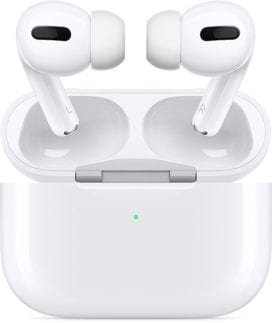
In Proclusion
One has to wonder if adding the word “Pro” to the end of a product name is merely an excuse to jack up prices. Additional functionalities and/or new and updated features sufficient enough to justify calling something “Pro” have to exist. Making the new AirPods Pro look like tiny hairdryers is not enough.
AirPods Pro are available for order now at apple.com, and for purchase in stores beginning Wednesday, October 30 – and they come with a hefty pro pricetag of $249. The current non-pro AirPods are $199, so the question is, are the features of the Pro worth the extra $50? We may need to wait and see (rather wait and hear), but we’d love to know your initial thoughts and whether you’ll be taking the Pro leap!
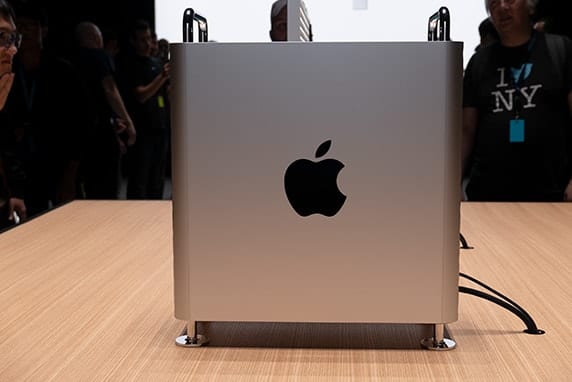
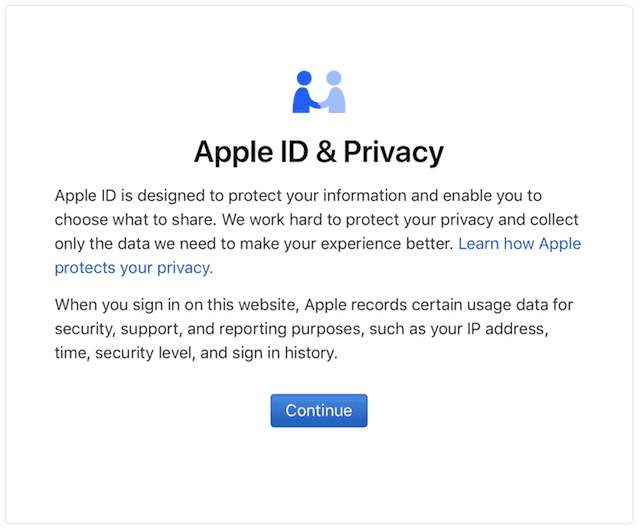

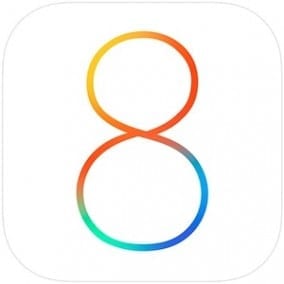


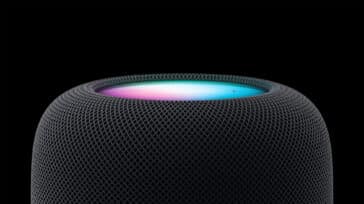
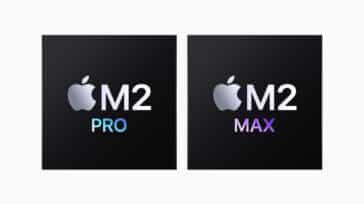


The most frustrating thing about my Standard AirPods is they don’t connect to the closest Apple device, even when, say, my iPhone is the only device in range. By contrast, my Bose QC 35 not only connect and tell you so, they pair to multiple devices! That’s the way Bluetooth should pair and I’d except the AirPods Pro to behave if they’re going to be called pro.
Sad days for me that Apple finally produces an earbud that is likely to fit my ear. My stone-age iPhone 5 is apparently incompatible with these new earbuds. With the demise of my Phazer Bluetooth earbuds last week, I’m now facing the dilemma of whether to drag myself kicking and screaming to a newer vintage of iPhone or hunt for older designs of Bluetooth earbuds that are compatible with the old phone.
Decisions, decisions.
All that discourse and equivocating over the “Pro” moniker and you haven’t even put hands on them?
Fer crin’ out loud, they’re available from Amazon and dropped in Apple Stores the next day.
Why not just go pick up a pair and try ’em out instead of just feeding us idle speculation over the press release?
Hi Verne, thanks for sharing your thoughts. We have a very dedicated group of readers who love to entertain ideas and enter into discussions, so sometimes we post simple prompts to kick-start conversations.
Got these the day they came out. 100% worth the extra $50.
The bass response is way better than the original AirPods.
I was using Beats Studio 3 when I needed noise cancelling, but of course mess up my hair and hurt my head because I wear glasses. No pain with the in-ear design of the AirPods Pro!
Transparency mode is great for phone calls so your own voice doesn’t sound weird to you.
Why do you which is basically a review without a real review with no conclusions? What a waste of time!
I had a chance to try these new ear pods – and I have to say that I’m impressed with the entire package. The ability to switch between the noise cancelling mode and regular mode is great. The sound quality was quite surprising – seemed like I had a regular set of headphones on, with out the annoying band across my head.
I will absolutely buying a pair of these for Christmas.
ANC does function without music playing, or even a bluetooth connection. I use them in the subway stations in NYC to buffer the awful noise from the trains.
I’ve never been a fan of AirPods and had been using Bose earbuds until now. These pros have really impressed me and I’d say that given the size and near weightlessness in the ear, they’re preferred over my over-ear headphones most of the time. Apple got it right this time.
If I had any gripe, it would be for a design with a replaceable battery, perhaps a twist-off stem battery that could be replaced when they age.
What about the battery life and battery replacement method?
Up to 5 hours of continued use. If you have the included Wireless Charging Case fully juiced up and on hand, you’ll have up to 24 hours before needing a recharge. Because they are rechargeable batteries, they need not be replaced.
Except that when the batteries wear out (all rechargeable ones have limited cycles) you have to throw the Airpods out.
As far as I know, Apple hasn’t said anything about it apart from:
“All rechargeable batteries have a limited lifespan and may eventually need to be serviced or recycled. Your own battery’s lifespan will vary depending on how you use your device as well as the settings you choose for it.”
This appears in the general battery statement on their website. But what I have seen in some online chatter is that you should generally expect about two years of normal use before they need servicing.
“you have to throw the Airpods out”
Are you certain about that? Apple has numerous devices ranging from iPod, Apple Watch, iPhones to MacBooks of all shapes and sizes that offer battery replacement programs. AirPods themselves offer a battery replacement program for US$49; the devices are not disposed of the instant batteries no longer hold a charge.
Keep an eye at https://support.apple.com for information regarding AirPods Pro-specific servicing, but for now we shall expect that the Pro variation follows the same repair policies as the AirPods.
How well do they work with hearing aids?
Probably not well unless the hearing aids are seated further down the ear canal.